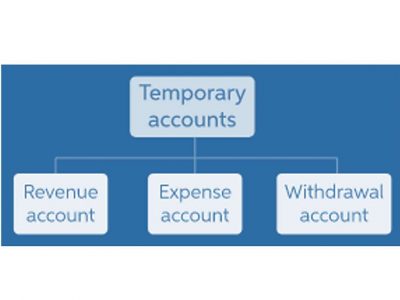Product Costing Explained: Formula and Examples

It helps you understand the financial implications of your decisions and accurately assess how much it costs to produce a given product. In addition to categorizing costs as manufacturing and nonmanufacturing, they can also be categorized as either product costs or period costs. This classification relates to the matching principle of financial accounting. Therefore, before talking about how a product cost differs from a period cost, we need to look at what the matching principle says about the recognition of costs.
- However, it can be argued that depreciation is an indirect component of the cost of a product.
- If the company sells Widgets for $20 each, then it appears to be making a profit of $2 per Widget.
- Metrics such as production runs, quality inspections, or machine hours provide different perspectives on overhead costs.
- In the latter case, product cost should include all costs related to a service, such as compensation, payroll taxes, and employee benefits.
- Whatever the reason, undercosting can be a risky pricing strategy that can lead to financial problems for businesses.
- Variances may arise when actual expenses deviate from estimates, necessitating adjustments.
- These unsold units would continue to be treated as asset until they are sold in a following year and their cost transferred from inventory account to cost of goods sold account.
Product cost vs. period cost
- Product cost accounting is crucial for gaining insights into the profitability of a business.
- Therefore, before talking about how a product cost differs from a period cost, we need to look at what the matching principle says about the recognition of costs.
- By considering all of these factors, you can get a reasonable estimate of the total cost of your product.
- If this isn’t fixed quickly, the company will make less money and could lead to layoffs and plant closures.
- However, managers may modify product cost to strip out the overhead component when making short-term production and sale-price decisions.
These standards dictate how product costs are reported, influencing financial metrics such as gross margin and operating income. Transparency in cost reporting builds trust with stakeholders, including investors and creditors, who rely on accurate financial statements to assess performance and financial health. Effective cost management and reporting practices ensure regulatory compliance and enhance decision-making, supporting strategic growth and resource allocation. To manage direct labor costs, businesses employ techniques like time-motion studies and labor efficiency metrics. Time-motion studies identify inefficiencies, allowing companies to streamline operations.

Accounting Guide

Tracking material usage through metrics like material yield and scrap rates can identify inefficiencies. For example, a manufacturing firm Bookkeeping for Painters might use a material yield ratio to assess raw material conversion into finished goods, highlighting cost-saving opportunities. Both strategies require careful planning and execution, but the rewards can be significant. By improving product quality, manufacturers can reduce material costs while reducing warranty expenses and increasing customer satisfaction. Reducing waste helps companies save on both the cost of raw materials and disposal fees. You may find yourself in a situation where you determine your production costs are more than you desire.
- For example, the cost of operating the accounting department is not likely directly related to the number of products produced.
- Considering the scope, developer costs, team structure, equipment/software purchases, other costs, and time allows product managers to make informed decisions impacting success.
- To get an accurate, comprehensive, and reliable estimate of your total product cost, you need to gather much information on many costs.
- Several methods are used to calculate product cost, including direct, full, and traditional costing methods such as absorption and activity-based costing.
- However, it is usually preferable to compute this cost per unit because it might aid in determining the right finished product sales price.
- The management of Raymond’s has estimated its costs to direct material, direct labor, and factory overhead costs.
Activity-Based Costing
Undercosting can be a deliberate pricing strategy for some businesses, particularly new businesses. The logic is that by underpricing their products or services, they will be able to attract more customers and grow their business quickly. When a business costs its products or services too high, it can miss out fixed assets on customers and sales. In conclusion, understanding product cost is critical for the success of a business. It enables a company to make informed decisions, stay competitive, and increase profitability.

Alternatively, customer research can show that you are on the wrong path and need to pivot. Time is money in this scenario, so you’ll want to consider how long you expect the development process to take and keep track of the actual timeline of events. A bit harder to calculate, time is a crucial factor to consider nevertheless. The software development lifecycle is time-consuming, and you may face obstacles that could lengthen product costs consist of your timeline. It can be costly to fully build out this level of complex software and maintain it. Understanding how to properly categorize these costs helps you optimize your spending, prioritize investments, and ultimately, drive the company’s growth and success.
Understanding Product Costs for Better Business Decisions
Rather than focusing solely on production costs, you should check the complete manufacturing process. A product cost is an expense capitalized as inventory when it gets incurred to manufacture a product. In other words, these costs are required to make a finished good and are capitalized on the balance sheet since they will benefit the company in the future.

Understanding the Costs in Product Costs
Absorption costing is generally used in businesses that manufacture physical products. It can be helpful in decision-making by providing a more accurate picture of the actual cost of each product. However, it is vital to understand the limitations of this method and how it may not always provide an accurate representation of reality. This not only helps you determine the next project to prioritize but also maximizes your profits. Put simply, understanding the costs of developing a product, feature, or update helps you make more informed decisions throughout the product lifecycle. Also, the overall cost determined under the overhead budget is converted into per unit terms to determine the cost of ending inventory.

